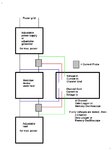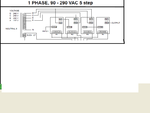nazeerhussain
Newbie level 5
I want to build an AC voltage stabilizer relay type in the range of 2KVA to 5KVA capacity operating voltage between 160 to 260 volts AC, frequency 50HZ. The thing I am stuck on right now is that after completion of project how I test/calibrate the voltage stabilizer. Can any one send me any such procedures to be followed for testing/calibration and reliability of Voltage stabilizer? Does any particular test equipment will be required for that purpose.
Respected Readers may submit either a link or PDF files. Waiting hear at the earliest.
Thanks for the help
Regards,
nazeerhussain
Respected Readers may submit either a link or PDF files. Waiting hear at the earliest.
Thanks for the help
Regards,
nazeerhussain



